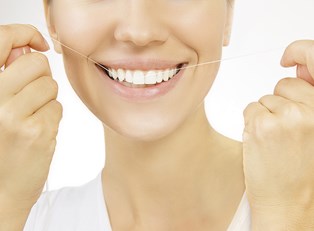With dozens of options sitting on the supermarket shelf, picking a toothbrush can be an overwhelming task. What are the basic types of toothbrushes? What makes a good toothbrush? How do you know which toothbrush is best for you? Below are tips that will answer these questions and make your important dental-health purchase.
Manual Toothbrushes
Despite thousands of toothbrush patents, there are two basic types of toothbrushes: manual and power. Manual toothbrushes come in a variety of colors, designs, and lengths. These toothbrushes have a plastic handle with a head at one end containing bristles. The bristles are most commonly made out of synthetic fibers characterized as soft, medium, or hard. Most dentists recommend using a soft-bristled brush to avoid gum and enamel damage. A small head, approximately a half-inch wide and an inch tall, will most effectively reach the back teeth of adults. Manual toothbrushes are relatively inexpensive and should be replaced every three months or earlier if they begin showing wear.
Power Toothbrushes
Power toothbrushes include battery-operated and sonic varieties. The bristles in battery-operated toothbrushes mimic your hand motion by moving back and forth or rotating up to 7,000 times per minute. Sonic toothbrushes remove plaque by vibrating vigorously at speeds up to 40,000 times per minute and are usually charged by with an electrical outlet. Power toothbrushes are more expensive than the typical manual toothbrush, and the brush heads need to be replaced approximately every three months.
Manual vs. Power Toothbrushes
So should you stick with the traditional manual toothbrush or buy a power toothbrush instead? That depends on your particular needs. Power toothbrushes require less hand movement and are particularly helpful for those with arthritis or decreased range of motion in their hands. You may find you are more likely to brush your teeth for the entire suggested length of two minutes if the brush does most of the work for you.
When used properly, manual toothbrushes can be just as effective as power toothbrushes at removing plaque. Manual toothbrushes are usually significantly cheaper than their powered counterparts, a clear benefit if finances are a concern. Additionally, some people prefer the streamlined handle of a manual toothbrush over the sometimes cumbersome handle of a battery operated toothbrush.
Children sometimes prefer battery-operated toothbrushes because they seem more fun. These powered brushes may also better prepare a child for the power tools at the dentist. Alternatively, some children may be frightened by a power toothbrush. A perk of manual toothbrushes is kids get to pick out a new one every few months. Whether you get your child a manual or power toothbrush, be sure to get a child-sized brush so it will properly fit inside his or her mouth.
What's the bottom line? The best toothbrush for you is the one you will use. So pick a color and style you like, a model you can afford, and one you will be willing to use twice a day for at least two minutes.



